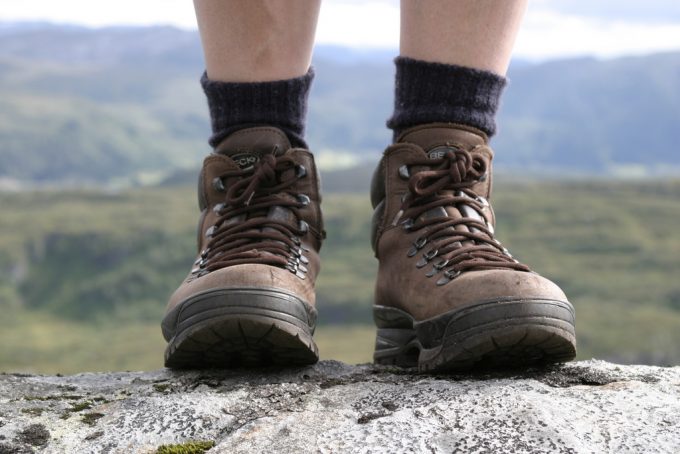Hiking with Cats: How to Take Your Feline Friend on an Adventure
When it comes to hiking, you’ve probably thought about taking your dog with you. However, did you know that with just a little bit of training, you can easily bring your feline friend along? Hiking with cats isn’t as impossible as you think it might be!
With just a little bit of leash and harness training, as well as the right equipment, both you and your cat pets should be able to enjoy hiking trips together. Cats are independent and curious creatures – once they get used to the idea of the leash, everyone’s bound to have a great time.

To help you out on training your cat on wearing a harness and walking on a leash, we’ve put together a comprehensive guide, with step-by-step instructions. We will also talk about what you should expect when first taking your cat outside and what you might need to pay attention to. Keep reading on to learn more!
Can You Really Take Cats Hiking?
Are you still in doubt that you can really hike with a cat? Actually, you can – it’s not an absolute mission impossible. More and more cat owners have trained their cats with leash and harness and started taking them on outdoor trips with them.
If your cat is curious and always opts for an adventure outside, then you won’t have much trouble taking it out. In that case, your only worry will be that you’ll have to leash-train it well enough at home first so it behaves at its best while outdoors.
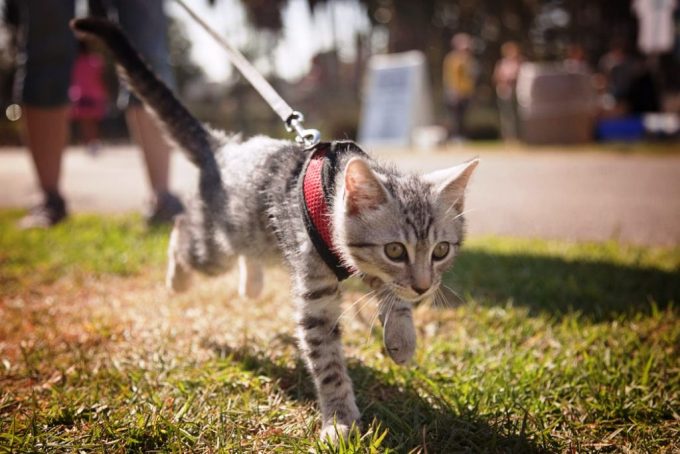
However, if your kitty gets easily scared and isn’t that keen on exploring the outdoors, it might take you a while to do some leash training at home – and then in your yard – first. Note that both older and younger cats can be leash trained – all you’ll need is a bit of patience from your side!
Things You Need to Know Beforehand
If you’ve been wondering what’s a good way to get both you and your feline friend in the right mood for your next adventure, here are a few tips you might find useful.
Keep Your Expectation Low
Are you expecting to walk your cat just the way you walk your dog? Well, things probably won’t work out the same – it’s important to keep your expectations as low as possible on your first outing trip together.
Don’t expect that a cat on a leash will walk the same way like a dog does – chances are, your cat won’t be as thrilled if you try to pull the leash and control its movement. Instead, if you feel you can’t really gently guide your cat, it might be for the better to simply pick it up and carry it for a while before allowing it to walk again.

The distance you cover on your first trip together will very likely depend on the nature of your cat – while some cats are happy to be active and explore the outdoors, others would prefer more to curl up and have a quick nap even after the shortest of walk.
Think About the Route
Thinking about the route you’ll be covering with your friend might be a crucial factor determining the success of your trip. For instance, if your cat is scared of water, going through a route that has streams or rivers on the way might not be ideal.
On the other hand, in the rare case that your cat enjoys splashing around in water, be careful where you allow it to soak its paws – some bodies of water might be contaminated and you might end up bringing home something more than what you first asked.
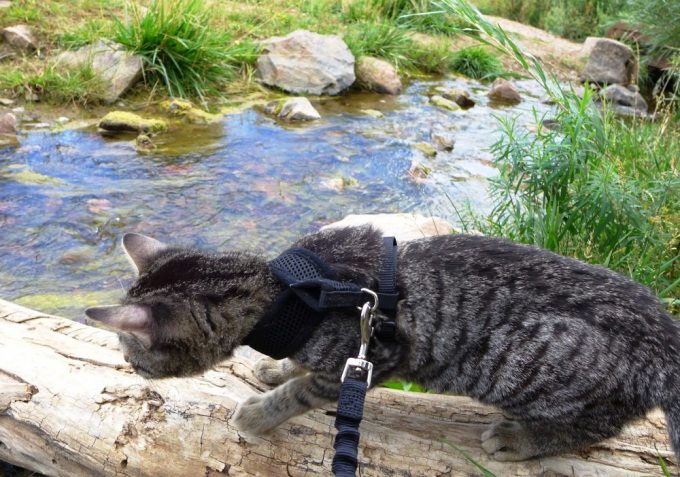
Also, don’t expect to cover miles and miles on the first few trips. Choosing the most basic route and then slowly increasing both distance and elevation might be ideal in this case.
Get Your Pet A Collar
You’ve probably already done this but getting your pet to wear a collar tag with some basic information might be crucial for your trip. In case your pet somehow gets lost, rest assured, it can be easily tracked and brought back to you.

Microchipping your pet is another great way to make sure you can easily find your pet in case it gets lost. Depending on location, it could be pricier but if your little friend over there is mischievous, it might be well worth the investment.
Get the Right Leash & Harness
Getting the right harness for your pet is very likely going to play a huge role on your next hiking trip. Ideally, you’d want the harness to be not very tight but not very loose either. Don’t forget, your cat won’t be thrilled if the harness doesn’t feel comfortable.
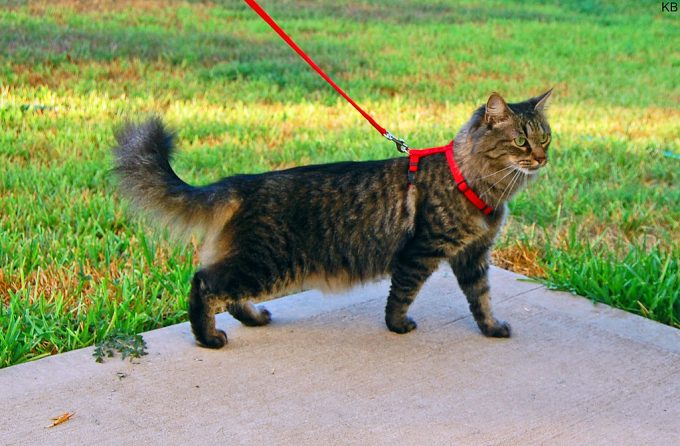
There are a plenty of different harnesses available in today’s market. To ensure the best fit, look for a harness that’s easy to put on but not easy for the cat to sneak out of. As far as the leash is concerned, make sure that the leash attaches to the back of the harness and not on the neck – your cat wouldn’t enjoy being pulled by the neck.
Getting Started
Feeling ready to start training your cat? Here’s how to properly do it.
Introduce the Harness at Home
You’re very likely going to make a big mistake if you take your pet straight onto your hiking path without properly training it first. Remember, your cat needs to get adjusted both to the harness and the leash – and your home is the right place to start.
The harness training process should move on gradually and involve some positive experience – food in this case. Offer the harness to the cat to sniff – whenever you do that, give a treat later on as a reward, thus creating the positive experience for your cat.

Also, it could also help if you leave the harness next to your cat’s favorite place: near its food dish or its favorite sleeping place. That way, it can get used to it – the smell in this case – and won’t find the object itself as scary.
Attach the Leash
After you’ve noticed the cat feels comfortable enough with the harness, it could be the right time to introduce the leash as well. Again, do this at home first and do it in a gradual way.
You can try attaching the leash to the harness and seeing how your cat likes it. On top of that, you can also allow it to move freely inside without you trying to control it – the whole idea here is that the cat gets used to the object.
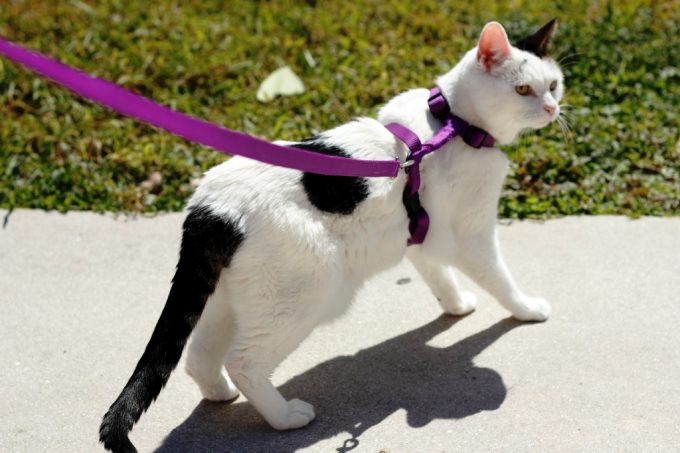
Then you can take things one step ahead – take your cat out in a yard or a nearby park, though make sure you have enough control over it if you’re in an open area. Try holding the leash now but without applying too much pressure – just guide your pet around.
Never try to pull the cat using the leash, as this may create the opposite effect of the one you were looking for. Also, don’t forget to offer a reward in the end, thus reinforcing the positive experience.
Things to Carry With You
Here are some of the things you should get for your next trip, alongside the most basic backpacking equipment you’re carrying for yourself.
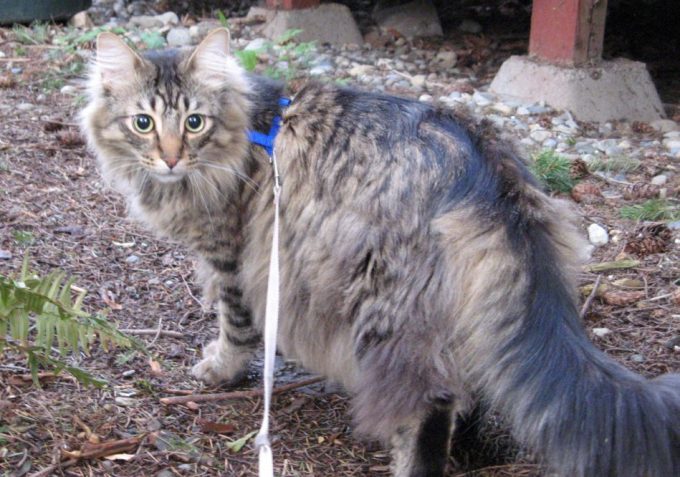
- Carry a towel to quickly wrap up a panicked cat
Get a Proper Backpack
Getting a backpack where your cat can fit as well might be pretty important in this case, as you might need to carry your cat in it at times. Don’t forget that even though your pet is pretty active at home, they could still get tired more quickly than dogs and you might need to carry them until the end of your trip.
Ideally, you should be getting a backpack that can fit both your items but also have some room for your cat. For example, a backpack with a larger pocket in the front might be a good idea but feel free to experiment until you find what works best for you.
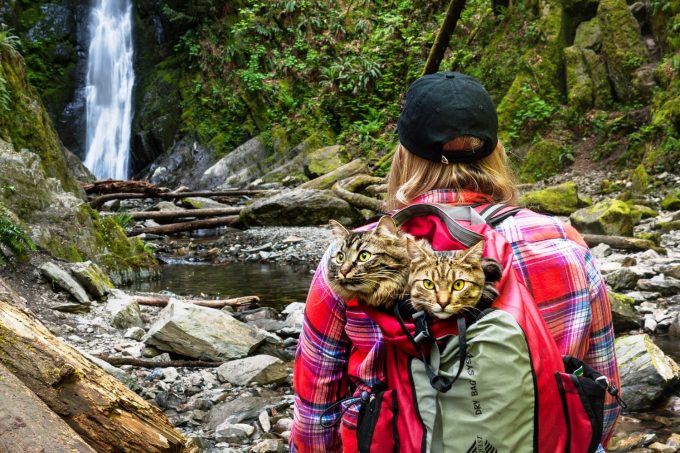
Also, there are some specially made carriers that you can get. As long as you won’t be carrying that many things with yourself, carrying that instead of a backpack might work better for your pet.
Bring Enough Food & Water
The same as you do for yourself, always make sure you’re carrying enough food and water to last you during the whole trip. Don’t let your pet drink from rivers or streams – water might be contaminated. On top of that, it’s important to consider the weather condition as well – if you’re hiking in summer, your cat might get dehydrated faster in the hot weather.
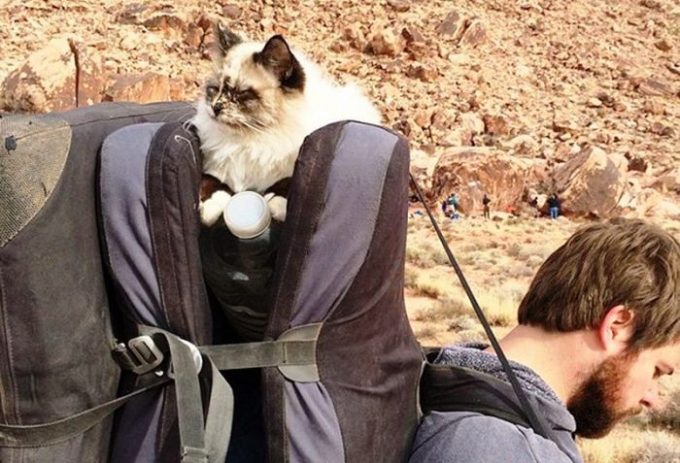
Apart from that, hiking is a demanding activity for your pet as well, so make sure you’re planning all meals beforehand. Don’t forget to bring something along – a bowl/cup – out of which your cat can eat.
First Trip to Nature
Once you feel the cat has gotten used to the whole leash and harness experience, it’s time to start exploring nature together. Don’t forget – you shouldn’t be forcing the cat to do anything but rather allow things to take their natural flow.
Carry It Through The Door
One bit of advice you may appreciate here is this: no matter how well your cat handles the leash and the harness, whenever you go on a trip, carry it through the front door yourself.

This is done mostly so you won’t encourage the cat to cross the door on its own even if it sees it open in another occasion – and in an event like that, it might not have a leash on its back.
Pick a Quiet Place
Even if your cat has spent days lurking out of your living room’s window with the hope of going outside, it still might get startled if you take it to a place full of people and other animals. Chances are, your cat won’t be thrilled on encountering a bunch of dogs on its first camping trip, right?
Cats are curious creatures and like to explore, so make sure you’re picking a place where they can do just that. If it decides to walk slowly or if it keeps going around in circles exploring rocks and stones, let it be – cats love feeling secure with their surroundings and this is one way they’ll make sure there are no threats to them.
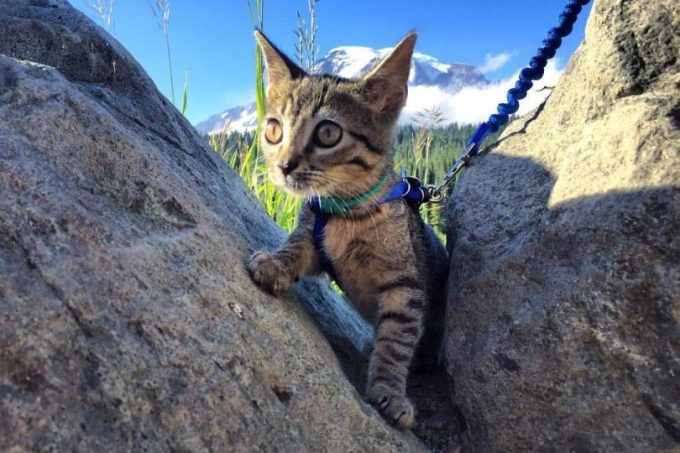
Also, different cats enjoy different types of terrain – some kitties might be thrilled to explore uphill, rocky paths while others would enjoy more running around in the grass. It might take you a few tries to get the right place for your friend but make sure to try out different terrains.
No matter the place you pick, if your cat decides to wait or walk slowly, then wait for it and don’t force it to walk fast. Instead, let your cat venture on its own in the surrounding area.
Keep Potential Threats Away
While it’s true that most cats should be more than happy to explore nature (at least once they get used to it), there are still some potential threats to them in nature. Those include but shouldn’t be limited to other wildlife animals, rodents and other pets (think dogs in this case).
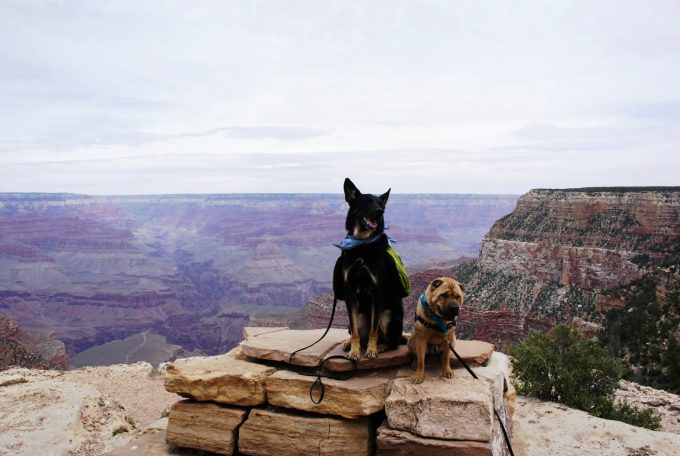
Dogs can be friendly to cats but your cat might not share the same feelings, so be aware of dogs whenever you spot one around. If your cat is used to playing with dogs – for example, if you have both dogs and cats in your house – you still might want to pay attention, making sure no one gets home harmed or scratched, in this case.
Last but not least, once you’re done with the walk, make sure you check your furry friend and see whether there are some mites or ticks attached somewhere in the fur. Things like that may be harmful both to you and your pet as well and you definitely don’t want to bring them in your house.
Never Leave it Alone
Once you’re in nature, always keep an eye on your cat, as to ensure your pet doesn’t get in any trouble. Also, if you’re in a place that’s full of people, you might want to pay attention as not everyone feels comfortable around animals.

Also, you could be tempted to leave your cat with its leash tied to something – a bench, a tree, etc. However, this is a very bad idea in the first place, as your cat might end up hurting itself by trying to move around with the leash, but there are other dangers as well (think other animals, unknown people approaching and scaring it, etc.).
Set Some Ground Rules
Pets are creatures of habit – and having some firm rules to adhere to is even more important while you’re still training them. For instance, once the cat gets used to the leash and harness, it might sit and “cry” in front of the door, moaning to go outside – and by actually taking your cat outside you’re rewarding (and thus encouraging!) this behavior.
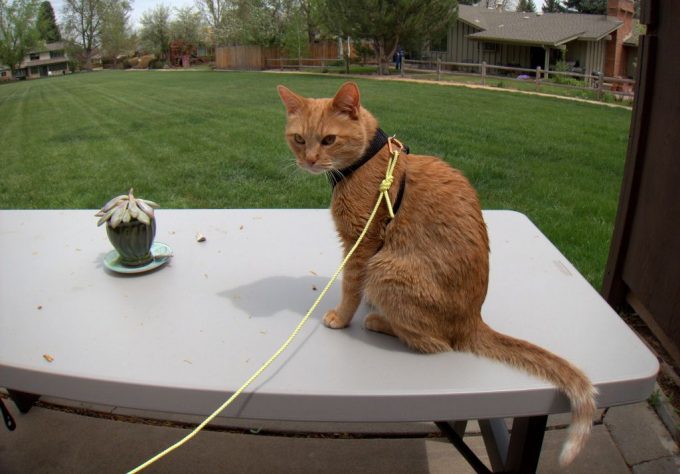
Instead, even if you’re trying to leash train it, always have some sort of a schedule you’ll be following – a daily walking schedule might work great as well. On top of that, letting your pet wander on its own in nature might encourage that behavior at home as well, so it’s probably for the best to keep the leash on at all times during your trip.
Don’t Get Discouraged
The important thing is to try and keep your spirits up – don’t get disappointed if you don’t cover as many miles as you planned to at home or if your cat misbehaves. Don’t forget, cats love doing things slowly and deliberately and getting used to hiking is no exception as well.
Plenty of pets have started their outdoor adventures timidly but later on, became a real pros when it comes to hiking. Just make sure you’re giving your pet enough time to get used to the whole idea.
Paw Your Way to The Top
Bearing all of that in mind, hiking with cats doesn’t look as impossible as you first thought. As long as you give your cat some space to get used to the whole idea, both you and your pet should soon start enjoying trips together.
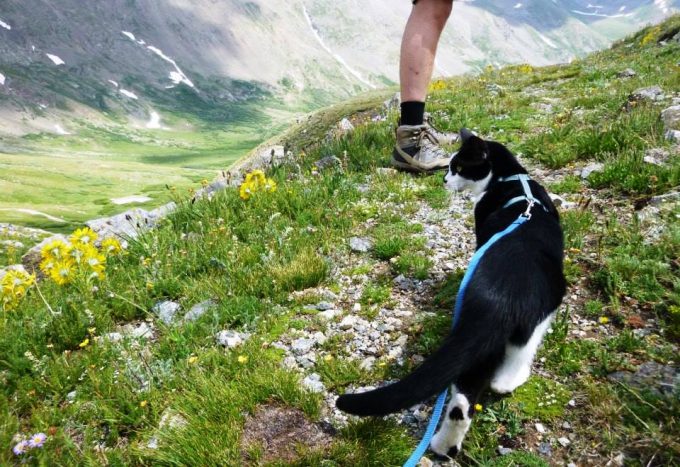
While it’s true that not every cat will fancy the idea of wearing a leash and a harness, you have nothing to lose if you give it a try. Remember – don’t force anything and let your cat get used to the whole idea.
Have you ever taken your cat hiking? If so, do you have any tips to share with us? Feel free to drop us a comment in the comment section, we’d love to hear back from our readers!




